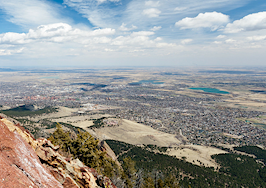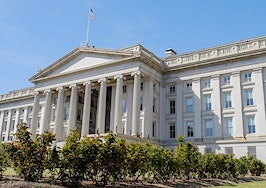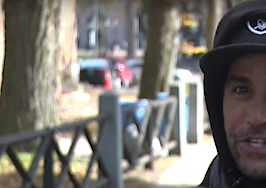The homeless population in America last year stood at 661,000 men and women, according to an analysis by Zillow released Tuesday that casts doubt on official U.S. Department of Housing and Urban Development estimates that previously put the number at more than 100,000 fewer people living on the streets.
In 2017, the Department of Housing and Urban Development (HUD) put the official number of homeless people at 553,752 nationwide. The new homelessness report, which Zillow published in partnership with researchers from the University of New Hampshire, Boston University and University of Pennsylvania, shows that the number of homeless people increases drastically in cities where rent increased rapidly. The HUD numbers, which count the number of homeless people at a certain time, may not capture the number of people temporarily forced to the streets by changes in the cost of their rent, according to Zillow.
Even as total homelessness rates have fallen approximately 13 percent since 2010, cities with skyrocketing home prices continue to shoulder huge homeless populations, Zillow found. Homelessness rates grow rapidly when the cost of rent surpasses 32 percent of the local median income, according to the analysis. Nationwide, people earning a median income spend 28 percent of it on rent.
The problem is particularly bad in West Coast cities that saw home value rates grow exponentially over the past decade. In Los Angeles, Portland, Oregon and Seattle the average renter spends 49 percent, 36.7, and 34.2 percent, respectively, of what they earn on housing. According to Zillow, these cities also have near-crisis levels of homelessness.
“It’s undoubtedly good news that the overall level of homelessness has fallen nationwide, even as housing costs have increased,” said Skylar Olsen, Zillow’s director of economic research and outreach, in a prepared statement. “But that zoomed-out view obscures some very real, local tensions between housing affordability and homelessness, and ignores the reality that success in tackling homelessness in one community doesn’t necessarily have the same effect in another.”
What’s more, Zillow found that every time the rent burden in a given city increases by 2 percentage points, at least 1,500 more people will become homeless. Those numbers only get higher in cities with high rents — in Los Angeles, the same 2-percentage point increase could force as many as 4,227 people into homelessness.
“The homelessness challenge itself is hugely multifaceted and nuanced from community to community, and requires local and national solutions that are equally flexible, nuanced and informed,” Olsen said.
Watch the livestream of Zillow’s Priced Out: Rising Rent and Homelessness Across America roundtable discussions on Dec. 11.










